How creating accountability zones can help you clean when you'd rather do anything else – 5 tricks to outsmart your brain and accomplish your to-do list
Chores take less than 30 minutes with this habit-building method
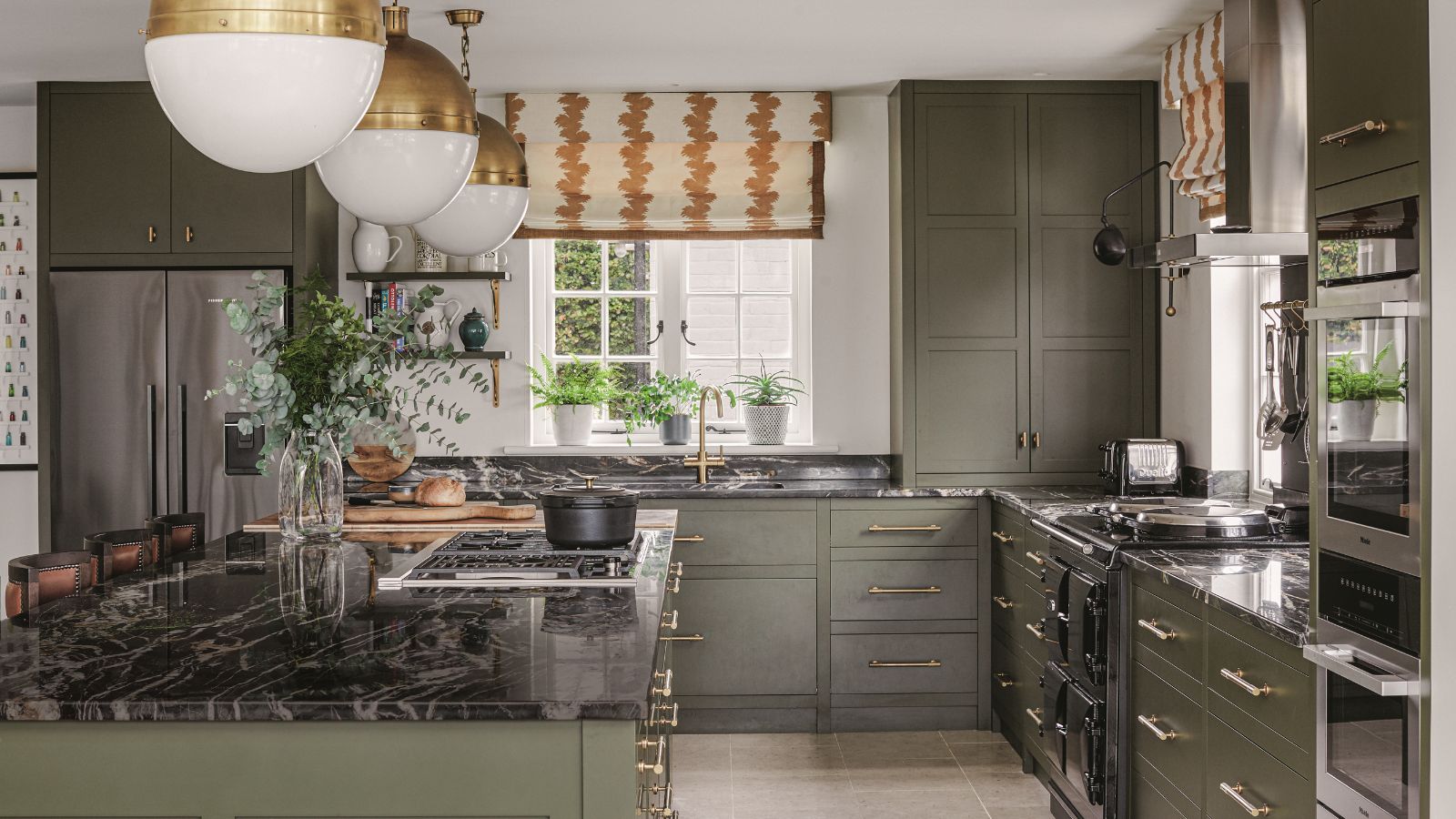

Chiana Dickson
As a professional cleaner, I have seen first-hand how mess can quickly take over a home. That’s why I encourage clients to set up accountability zones – simple, bite-sized areas that nudge you into action, even on days when chores feel impossible.
They aren’t about perfection or pressure; it's about creating small systems that mitigate overwhelm and prevent mess and clutter.
If you’ve ever been stuck on where to start, accountability zones could be the answer. Here’s how to set them up, and the cleaning tips you need to see tasks through.
What are accountability zones?
At its core, an accountability zone is a clearly defined, bite-sized section of a space that you commit to fully finishing before moving on. I use them as part of the transparent cleaning method that prioritizes awareness to avoid skipping over areas without cleaning when you feel overwhelmed.
You work on just one junk drawer, not the whole kitchen. One bathroom cabinet, not the entire bathroom. It’s about narrowing your focus so that the task feels manageable, then holding yourself to that commitment.
The “accountability” part is key. That means wiping, sorting, tossing, labeling – whatever needs to be done to call that drawer, shelf, or cabinet complete. Not "mostly done" or "good enough for now." Done-done.
How accountability zones work
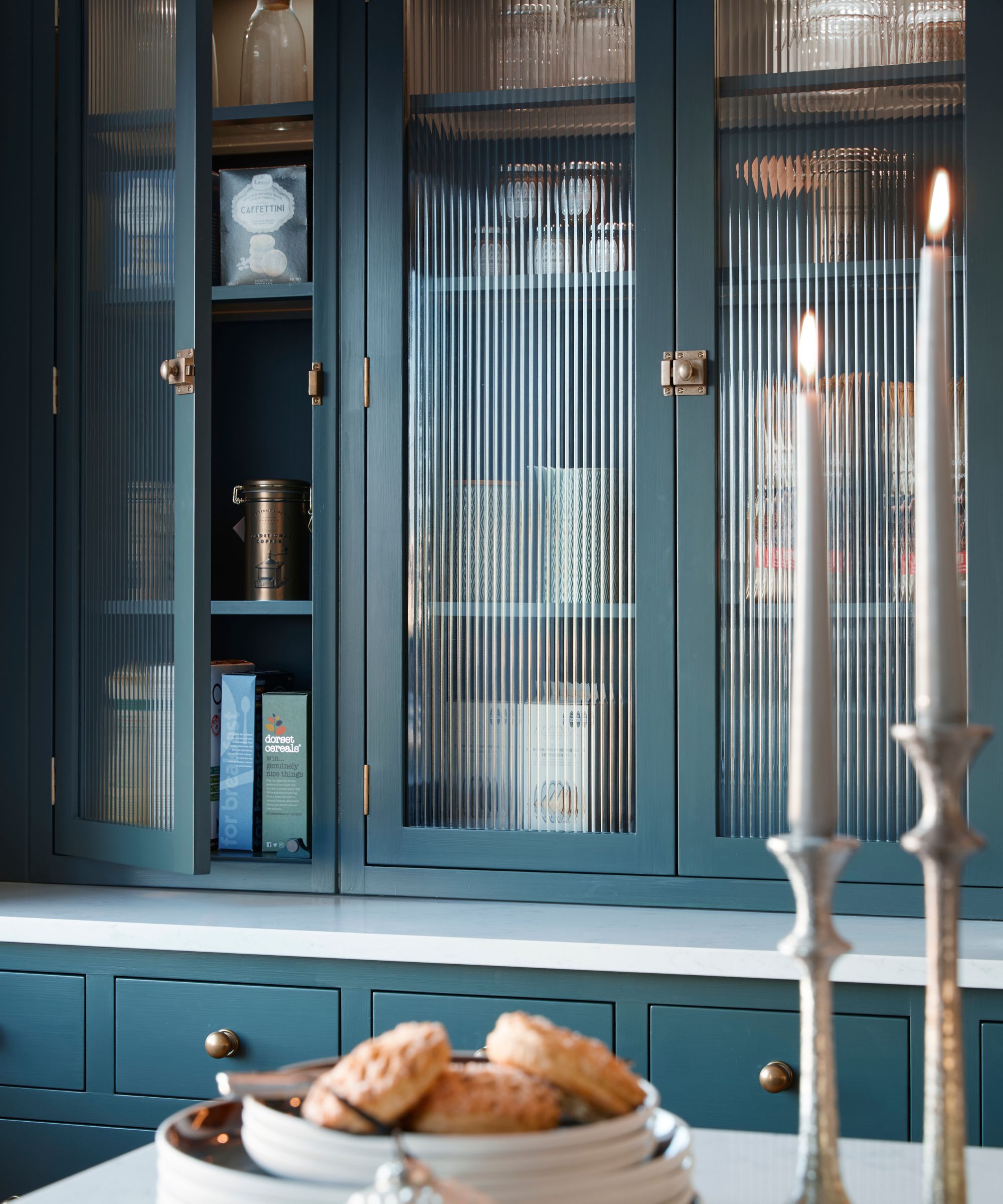
Create small zones to make them manageable, such as a cabinet or a drawer. Don't aim too big.
There are four main benefits to this cleaning and decluttering method:
Design expertise in your inbox – from inspiring decorating ideas and beautiful celebrity homes to practical gardening advice and shopping round-ups.
- They force decision-making – You can’t procrastinate by saying, “I’ll deal with that pile later,” because the zone isn’t done until every item has been addressed. It helps to stop clutter before it starts, and avoids the common home organizing mistake of simply shifting mess from one area to another.
- They build momentum – Finishing one small area gives you a mini win. That little boost of accomplishment makes it easier to keep going and stay focused when decluttering and cleaning. Instead of looking at a whole room and thinking “Ugh, where do I even start?” you’re just handling one drawer. Then another. Then maybe a shelf. Before you know it, the room’s done.
- They prevent overwhelm – One of the biggest reasons people stall mid-clean is because they take on too much at once. Accountability zones set natural limits that make even big jobs feel doable.
- They encourage cleaner habits long-term – Once you get used to treating every drawer or shelf like its own “project,” you start to naturally maintain them. That drawer that used to be a junk pit? It stays tidy longer, because you gave it full attention. It is one of the common habits of highly organized homeowners.
Setting accountability zones in your home
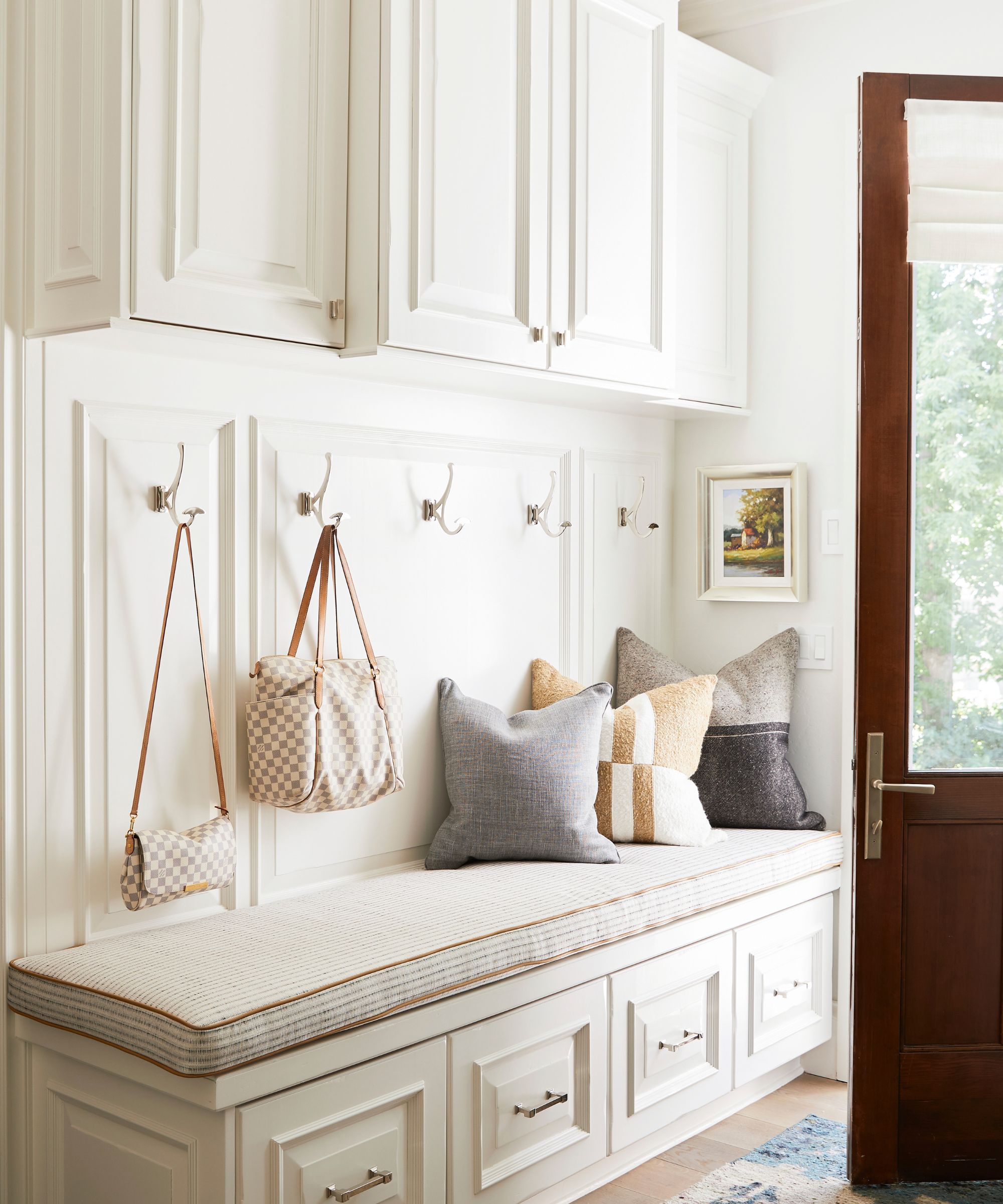
In a large space as an entryway, use wall hooks, or one drawer, as a zone.
As long as it has clear boundaries and a defined scope, it works. It should feel like something you can fully tackle in one focused session, ideally in 30 minutes or less to make it more doable. If it feels like too much, feel free to make it smaller.
I find that the best zones to start with are high-traffic, high-impact, or high-stress areas, meaning they either get messy fast, affect your daily routine, or just drive you nuts when they’re cluttered.
Here are a few great zones to set up:
- The junk drawer – Conquering the junk drawer is ideal. It’s small, contained, and usually filled with random stuff you don’t need. It’s a quick win and a great way to practice the “finish what you start” mindset. Adding in adjustable drawer dividers, from Target, can make this task easier and easier each time you come to it.
- Bathroom countertop or cabinet – It’s often a catchall for products, extras, and clutter. Cleaning and organizing to make the most of space in your vanity can make your morning routine feel less chaotic. This tired turntable vanity organizer, also from Target, can help to keep products together, making them look more intentional and easier to clean around.
- Pantry, shelf by shelf – Pantries can get overwhelming fast, so divide them into clear zones: Snacks, canned goods, baking supplies. Work one shelf at a time when organizing a pantry to keep the task manageable. The iDesign plastic Cabinet Bins, from Walmart, are ideal for keeping items together and shelves clean without hiding items.
- Fridge doors or produce drawers – These zones fill up fast and often hide expired or unused items. Cleaning them gives an immediate sense of refreshment.
- Nightstand drawer or top surface – This little zone affects how you start and end your day. A clean nightstand can feel surprisingly calming, so consider adding it as part of your closing shift routine.
- Closet corners – Instead of tackling your whole closet, break it into mini-zones: just shoes, just the top shelf, or just hangers with clothes you haven’t worn in a year.
- Desk drawer or workspace surface – These tend to collect clutter quickly. Keeping them clean can help with mental clarity, especially if you work from home.
How to hold yourself accountable
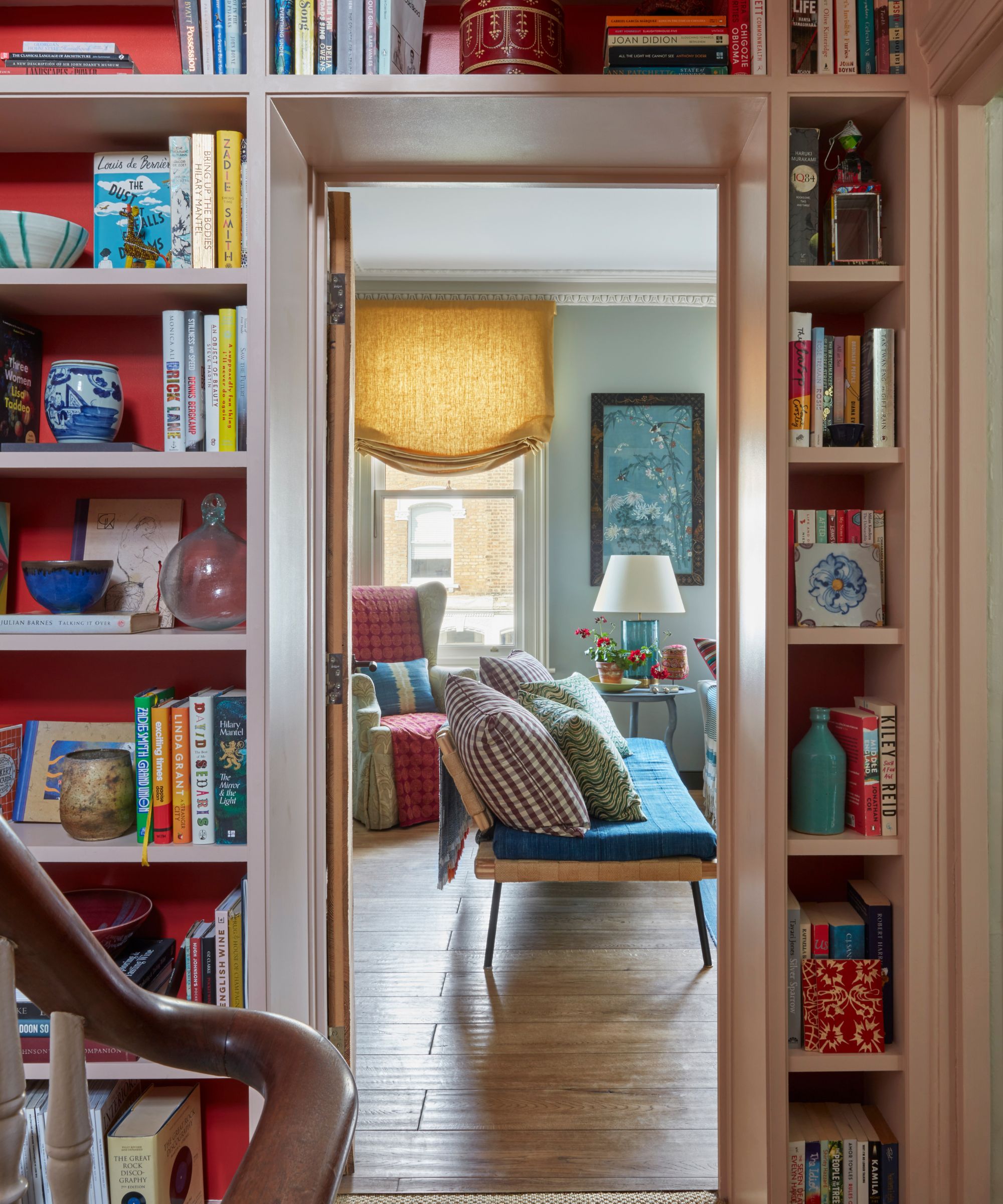
Keeping yourself accountable is a habit you will need to work on regularly to establish it in your routine.
Setting up zones is easy enough, but how do you break bad home habits and get motivated to clean? Accountability doesn’t have to be intense or formal; it just means setting up a little structure so you stay on track.
Here are a few ways to do that:
1. Set a timer and a clear goal
If you have set them up correctly, each accountability zone should be a home organizing task that takes 20 minutes or less. Decide on your zone, set a 20–30 minute timer, and commit to finishing it in that time. The deadline gives you focus, and knowing the task is time-bound keeps it from feeling endless. Using an analogue timer, from Walmart, can prove less distracting than your phone and offers a visual countdown for your tasks.
Sometimes writing a physical note on a Post-It, also from Walmart, that says “Less mess = less stress” or “I deserve a calm space” can also help to keep you committed to following through.
2. Create a checklist of zones
Working from a decluttering checklist or cleaning to-do list can make tasks feel more structured and less mentally overwhelming.
Using a simple label maker, from Walmart, label areas before you start, especially if you’re tackling a large space. For example: “Desk drawer,” “Top shelf,” “Pantry bin #1.” That way you always know where to return your focus if you get interrupted.
Then, write down all your potential zones on a physical to-do list, from Target, and check them off as you go. It gives a satisfying sense of progress and lets you track what’s been done.
When working, avoid “zone hopping.” If your brain tries to lure you away mid-zone with a random item that “belongs in the bedroom,” resist the urge to detour. Set it aside in a separate bin and stay anchored in the current zone.
3. Use the “before and after” trick
A fantastic way to build momentum and get motivated to declutter is to snap a quick photo before you start and again when you’re done. Seeing the transformation reinforces your effort and builds motivation to tackle the next zone. Afterwards, reward yourself. It doesn’t have to be anything big! Maybe a fancy coffee or an episode of your favorite show; tie a small reward to completing a zone to build positive reinforcement.
4. Have an accountability buddy
Chores do not have to be a solitary task. In fact, body doubling is one of the best ways to accomplish household jobs without feeling exhausted by the end of it. Share your cleaning plans with a friend or family member. Even casual check-ins help you stay honest.
5. Pair it with a mobile supply station
Tasks are a lot easier to complete if you have all of the correct tools. A rolling utility cart, from Target, loaded with your essential cleaning supplies is perfect here: You keep your tools with you as you move zone to zone, rather than wandering back and forth to grab what you need. For multi-level homes, The Home Edit two-part caddy from Walmart is a fantastic, lightweight option.
Similarly, keep a “relocate later” bin nearby. This helps you stay in your zone. If something belongs in another room, toss it in the bin and keep working. You’ll avoid the temptation to wander off and start cleaning elsewhere. A folding laundry hamper, such as the Joseph Joseph Basket, from Wayfair, is ideal for this as it folds away for easy storage when not in use.
What to shop
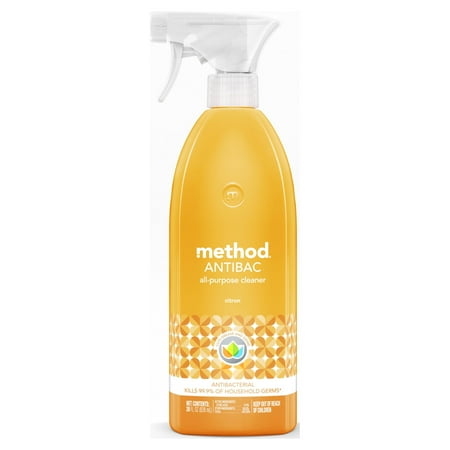
Made with plant-based ingredients, this all-purpose spray is perfect for most surfaces in your home, killing 99.9% of bacteria without having to fuss with multiple specialized products. It's essential to streamline chores.
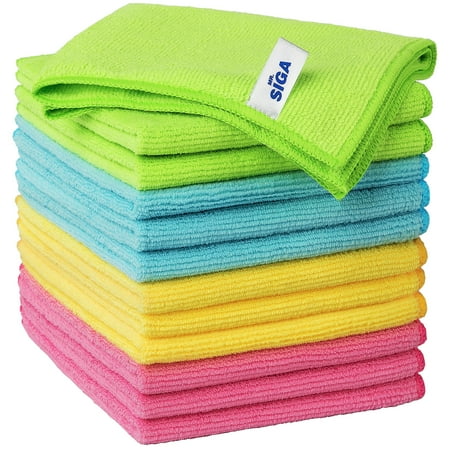
These non-abrasive cleaning rags can soak up water from the countertop and tables instantly and without lint or streaks left behind. They can be washed in your washing maching to refresh and use time and time again, too.

Baskets are the best go-to for creating smaller accountability zones in larger areas. Be they in your entryway, living room, or hallway, they can quickly corral clutter making it easier to put away at the end of the week.
With a few of these smart accountability zones in place, you can take the pressure off and actually make cleaning fun – or at least feel less like a chore as you stay consistent.

Karina is a professional cleaner and operations manager at Spekless Cleaning, which provides residential and commercial cleaning and maid services in Washington.
She has over six years experience overseeing all operations and quality control at Spekless.
- Chiana DicksonContent Editor